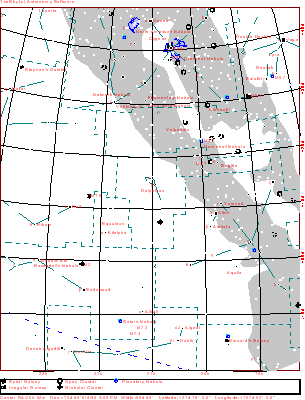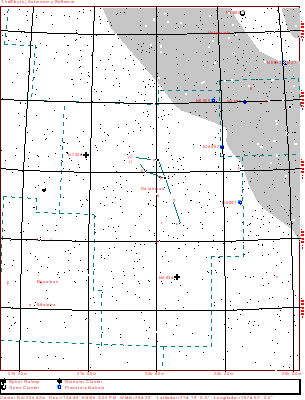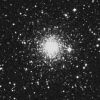
| Home | Deepsky Atlas | TheAstronews | Links | Solar System | ||||||

Hawaiian Astronomical SocietyConstellations: Delphinus -- Rescuer of Poetry |
||||||||||
The first, and less famous, involves the beautiful nereid Amphitrite. Ovid writes that Neptune saw her dancing on the island of Naxos, fell in love, and did what any self-respecting god would do: He kidnapped her. One version of the story has her escape and flee to the farthest end of the ocean. One of Neptune's dolphins found her, and persuaded her that the god of the sea wasn't so bad. In gratitude, Neptune placed the dolphin in the sky.
The second story comes from Herodotus, and involves the poet Arion of Lesbos (fl. 625 BCE), inventor of dithyrambic poetry. He spent much of his life serving his patron and friend, Periander, king of Corinth. Arion eventually felt the urge to travel, and spread his fame around the world. He began with Sicily and Italy, where he amassed a fortune.
He was sailing home from Tarentum when misfortune struck. His wealth incited the greed of the captain and crew, and they planned to rob Arion of both his money and his life. As a dying wish, he begged permission to sing a parting song. The evil men consented, and Arion sang a dirge accompanied by his lyre. He then threw himself overboard, and was rescued by a dolphin, which had been charmed by the music. The dolphin carried him on its back homeward to Taenarum, from whence Arion proceeded to Corinth, arriving before the ship.
Periander at first refused to believe Arion, but summoned the sailors, demanding to know what happened to the poet. The sailors explained that Arion had enjoyed Sicily so much, he had decided to stay behind. But even as they swore the truth of their claim, Arion appeared, dressed as he was when forced to leap overboard. The sailors confessed and were immediately executed. Later, Arion (astride the dolphin) and his lyre were placed among the stars.

Click the map for a 909x1199 version of the above. Click here for a map better suited for use in the field.

This a more detailed view of the constellation. The map displays stars to magnitude 10, and deepsky objects to magnitude 12. Click here for a map better suited for use in the field.
 33k JPEG Caldwell 42 (NGC7006) is a bright (mag. 10.6), fairly large (2.8'), round, globular that is not too condensed. Located 3.6° east of the double star Gamma Delphini (the dolphin's beak, or rostrum), its brightest stars are mag. 15-16, i.e. hard to resolve. This is a remote globular. Several faint galaxies inhabit the picture, the brightest (in the northwest, or top, right corner) is MCG3-53-9, also called GSC1648:1641. The Morphological Catalog rates it a mag. 15.2. The Guide Star Catalog rates it mag. 12.4, a huge difference. What do you think? 33k JPEG Caldwell 42 (NGC7006) is a bright (mag. 10.6), fairly large (2.8'), round, globular that is not too condensed. Located 3.6° east of the double star Gamma Delphini (the dolphin's beak, or rostrum), its brightest stars are mag. 15-16, i.e. hard to resolve. This is a remote globular. Several faint galaxies inhabit the picture, the brightest (in the northwest, or top, right corner) is MCG3-53-9, also called GSC1648:1641. The Morphological Catalog rates it a mag. 15.2. The Guide Star Catalog rates it mag. 12.4, a huge difference. What do you think?
|
 29k JPEG Caldwell 47 (NGC6934) is a bright (mag. 8.9), large (5.9'), round, extremely resolvable globular. Dreyer states its brightest stars are mag. 16 and fainter. Perhaps Dreyer was a tad optimistic. You can find it by moving 3.9° south of Epsilon Delphini, the "tail" of the dolphin. 29k JPEG Caldwell 47 (NGC6934) is a bright (mag. 8.9), large (5.9'), round, extremely resolvable globular. Dreyer states its brightest stars are mag. 16 and fainter. Perhaps Dreyer was a tad optimistic. You can find it by moving 3.9° south of Epsilon Delphini, the "tail" of the dolphin.
|
If you have any questions about the Hawaiian Astronomical Society
please
(link requires javascript).